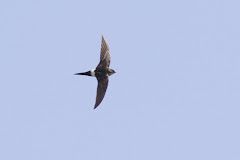


Photos: first two - Brown Bats at Vestamager, including an acrobatic individual doing an impressive 180 degree head twist to catch a mosquito; and a late afternoon scene at Vestamager Nature Reserve
Saturday was a glorious day - still, with a clear blue sky and a late autumnal chill in the air. I decided to look for Tengmalm's Owl in Kongelunden forest, figuring that with the recent irruption of this species in Sweden, there was a chance that one would have made it to this forest close to Copenhagen airport. The species has been seen there before in irruption years and is still recorded most springs. Despite checking almost every pine, spruce and fir tree in the forest, I had no luck. So I wandered towards Vestamager, the nature reserve made up of wetlands and wet birch forest. On my way, a fantastic Rough-legged Buzzard was hunting from a treetop in an open field. Living here has enabled me to get to grips with this species and learn the id characteristics that separate it from Common Buzzard (which can be incredibly variable). The longer wings (to me they almost have a kite-like appearance), pale/white upper tail, dark belly and large dark carpal patches on the underwing separate this species from its much commoner cousin and I was able to study this individual for around 20 minutes before it was flushed by a dog-walker.
Further along the path I was surprised to come across a group of 8 large bats hunting insects over one of the flashes in broad daylight. I was told by a local that these are BROWN BATS and are Scandinavia's largest species of bat. They are day-flying and migratory and are apparently seen in this area most autumns. If anyone out there knows anything about bats and can confirm the species, I would be interested to hear from you.
On Sunday, Libby and I went for a walk around the coastal wood at Sydvestpynten where we vistited the resident Tawny Owl that has returned to roost in the same tree for at least its third winter.
The hunt for Tengmalm's Owl continues..... maybe I should ask the Wise Woman for advice...!





